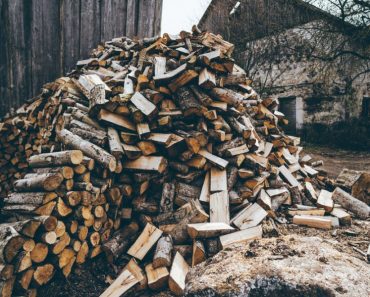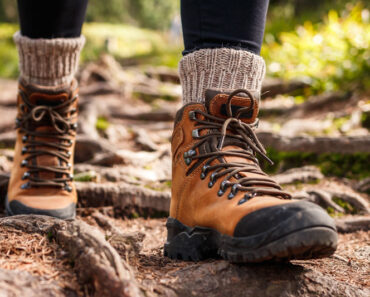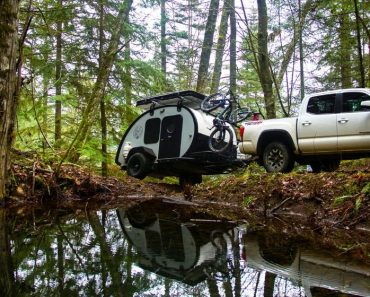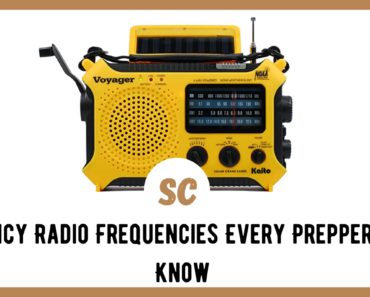Simply put, martial law is declared during times of crisis and emergency, such as a natural disaster, war, and civil unrest. A state governor or the federal government (the President) can bring in military forces to maintain or reestablish civil order.
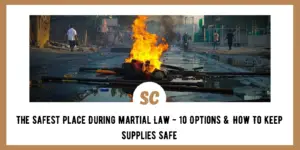
For this to be declared, circumstances must be extreme so that the posse comitatus act can be circumvented, which is an act that limits the use of military personnel to enforce laws that are domestic.
10 Safe Places During Martial Law
1. Get Out of Dodge!
The thing about martial law is that generally it doesn’t just happen. There are precipitating events that lead up to it, such as war or increasing civil unrest.
If you pay attention to these warning signs, you can make an educated guess at the possibility of martial law being declared. Additionally, authorities may even announce ahead of time when martial law will go into effect. This gives you the opportunity to decide whether you want to stay or go.
You will have to weigh leaving behind your home, belongings, family, and friends, against the value of your freedom and safety.
It’s a simple solution: don’t be where the problem is. I know, easier said than done. But at some point, you will have to make hard decisions like this.
2. Leave the Country
This may seem extreme, but this goes back to the first suggestion of not being where the problem is. If your entire country is effected by martial law, then it may be safer to cross the border and wait it out. However, there are two things to keep in mind:
One, make sure that the country you are going to is not worse than the country you are leaving. I know this may seem very obvious, but when people are scared and panicking, bad decisions are often made.
Two, be prepared for the possibility that martial law in your home country could go on for a long time. There are several instances in the world of martial law being in place for years and even decades.
If martial law takes place locally and you are close to a bordering state or area that won’t be affected, it might be safer to travel a short distance to those neighboring areas.
3. Go Rural
The effects of martial law seem to intensify as the population density increases. Basically, it’s probably going to be worse in large cities than in smaller towns, the country, or woods.
A smaller population means less authority figures and less law enforcement, so try and get somewhere where there are less people.
4. Stay at Home
Depending on the circumstances, it may be too dangerous to travel, and it could very well be that the safest place during martial law will be staying in your home. Your home is where you are going to be the most comfortable, and all of your belongings and supplies are already there.
Staying in your home also provides the “home field” advantage in staging defensive capabilities and plans to move forward.
5. Hard-To-Reach Places
The more difficult it is to get to you, the less likely it will be that someone will want to get to you. Basically, you’re making it not worth the effort for someone to bother you. There are a ton of different options and ways to accomplish this:
Get up into the mountains
The mountains can offer a safe retreat from martial law as the geography makes it difficult for groups of people and equipment to navigate.
Go deep into the woods and jungles
Dense woodlands and jungles have long been a safe haven for people looking to be isolated from external threats. These places can be extremely difficult to navigate but can also provide an abundance of resources for those who know where to look.
Cave systems
Caves are fantastic natural structures that can provide both protection and secrecy. They also have a psychological effect, as they can instill feelings of danger and fear. This alone has kept many people from entering them.
Bunkers
What better place to be during martial law then your own personal stocked bunker? Bunkers can provide both security and the resources needed to stay safe inside for periods of time. Of course, those resources will be limited.
Islands
Situating yourself on a hard to get to island could be one of the best places to avoid military authority or civilian authority.
Of course, you will need a reliable way to get to and from the island, as well as the resources to stay there.
Abandoned Locations
When civil authority is no longer recognized and the federal government (or any government) brings in the military to regain control of an area, the situation can go from bad to worse in short order.
If you can’t leave the area, you need to act quickly because violence can and most likely will happen, especially if large crowds are involved.
A good place to hide in an urban environment may be an abandoned location, like an old factory or apartment complex.
It’s a good bet that military personnel will search these locations, but if you make sure the area is completely absent of other inhabitants, they are more likely to search quickly and move on.
Keep In Mind…
Keep in mind that while the above suggestions have positive attributes, they also have negative aspects to them, such as:
- They will be hard for you to get to
- You may be unfamiliar with local dangers
- They may need outside resources to be sustainable
- You could end up cornering or trapping yourself with no quick escape
Keeping Your Supplies Safe
When they impose martial law, the military authority can pretty much do whatever they want (ignoring existing laws), which includes sending military personnel around to collect personal property.
Soldiers could collect typical valuables such as money, precious metals and jewelry, or anything they deem as valuable such as land, equipment, fuel, water, food, medication and medical supplies, firearms, etc.
Keeping yourself safe during martial law is important, but you will also need to have an idea of the safest places for your supplies and valuables.
Most people think one of the safest places to store items is in a safe. Yes, it does provide physical security because it is difficult to get into, and it can protect from things like water or fire. But it is also adverting that something of value is inside. It may take more time, but if someone wants to get into a safe, they will.
The safest place for a valuable item isn’t necessarily under lock and key, but in a location where it can’t be found in the first place.
Look around inside of your home – and outside of it – for a great hiding spot where your valuables can be hidden. It’s also best practice to split your valuables up as much as possible so that you don’t “keep all of your eggs in one basket.”
Some of these ideas are “old school,” and may seem like obvious hiding places to some, but they are better than nothing and may keep your goods safe from being taken.
Here are some ideas of how to hide your valuables:
1. Inside Food Containers
Old food containers like a coffee can make great place to store a small number of valuables. They provide a reasonable amount of physical protection, and some of them can be buried or left out in the open.
It’s best to use containers that have labels or that are solid-colored in nature so that you cannot see through them. However, if all you have are clear containers, then simply wrap some duct tape around them.
2. Inside A ChapStick Tube
This is an interesting idea that I have seen more than a few people use. When you have used up all balm in a tube of chap stick, clean the tube out and let it dry. The space inside is just big enough to allow for a few rolled up bills of cash.
3. Under The Floorboards
If you can pull up sections of your floor, you might be surprised at how much space there is to store supplies. This gives you the option of hiding a small number of items – or a lot. The trick here is hiding the entry point to the hidden cache so that it’s not obvious the floor has been messed with.
A rug over the floor will easily cover up the area, but it is also easily pulled back. So, try and put something heavy over it so that takes more effort to move, like a coffee table or dresser.
Note: There is a history in America and other countries of civilians hiding valuables under floorboards when military law is enforced
4. In The Mattress/ Cushion
Declaring martial law pushes some civilians to make their own rules and to hide valuables in places like a mattress.
There is a lot of space inside of a mattress and furniture cushions that can be used to store supplies you want out of sight. Cut a slit in the side of the cushion, put the supplies inside, and do your best to sew the hole back up so that it looks normal.
5. In An Air Duct
Air ducts that are running through a home can provide an out of sight area for a few supplies to be hidden. The easiest access point will be through the floor, wall, or ceiling vents. Use a screwdriver to remove the hardware that secures the vent in place and remove the plate.
Slide the items you want to hide inside of the air duct and replace the vent cover. Make sure that the item is pushed back far enough that it won’t be seen by simply looking at or peering through the vent and don’t hide an object inside that is so big it will prevent airflow.
6. In The Walls
This option is going to require your handyman skills, but it’s about one of the best locations in a home to hide items that you won’t need frequent access to.
When cutting into the floor, ceiling, or walls, use a lot of caution to avoid damaging plumbing or electrical components you can’t see. Additionally, you are going to want to be sure that the work you are doing won’t harm the integrity of the structure.
If you have drywall, find out the stud spacing and cut out the drywall between the studs. Place the supplies you want hidden inside, replace the drywall, and repaint the wall so that the access point blends in.
This may sound like an extreme or silly example, but I have heard a lot of stories of hidden caches of food, money, and precious metals found in the walls of homes that have undergone renovations.
7. Secret Rooms or Cabinets
This option is similar to the previous example, but by creating a secret room or by adding built-in cabinets into the walls, you’ll have a doorway that provides easier access.
8. Freeze It
Another hiding spot that I have heard many grandparents talk about when it comes to hiding items – especially money or jewelry – is in the freezer. I don’t think many people’s first thought would be to look in the freezer for cash or a gold ring, so it seems like a decent hiding spot.
If you are wanting to hide items that are made of paper or that will be damaged by moisture, be sure to seal them in a waterproof container before placing them in the freezer.
Other items, such as a ring or a coin, that won’t be affected by the cold or the moisture can actually be frozen in a chunk of ice, which provides further camouflage.
9. In An Undesirable Location
“Undesirable Location” is a very vague example, but that’s simply because there are too many options to list. But what I mean is to choose a location to hide items that someone wouldn’t want to look in because it’s unsafe, disgusting, or just too difficult to get to.
For example, I have heard stories of people burying valuables in the ground underneath corpses because once the corpse is found, people tend to stop digging.
10. Buried Supply Caches
All the supplies you have may not fit within your home, and not to sound like a broken record, but you shouldn’t keep all your eggs in one basket.
This is where supply caches come in.
A supply cache is basically a container of supplies that is hidden or buried around an area. Now, some of these can be on your property. But to ensure the most protection for your caches, it would be best to spread them out as far and wide as possible.
These types of caches are usually buried, but they can also be hidden under rocks or in hollow trees or caves. When preparing a cache, there are two things to keep in mind:
First, the container needs to be sturdy in order to provide protection against the elements, this is especially true if you plan on burying it.
Second, you are going to need a system in place to remember where the cache or caches are buried. The most obvious solution is to draw up a map, but if that falls into the wrong hands, your supplies could be compromised.
Final Thoughts
The purpose of this article is to provide you with ideas of what can happen when authorities declare martial law. When they do declare martial law, I am in no way telling you that you should misbehave and ignore civil law, civil authority, the federal government, the president, or a military commander.
Ignoring existing laws could cause a person to end up in a federal court, or in military tribunals that go through a military court that could be on almost any military base.
During martial law, the constitution (in America), your civil rights, and any other existing laws may be suspended, so do what you think is necessary to retain some sort of justice and control over your own life and safety.
Stay safe, stay prepared, and thanks for reading.






















